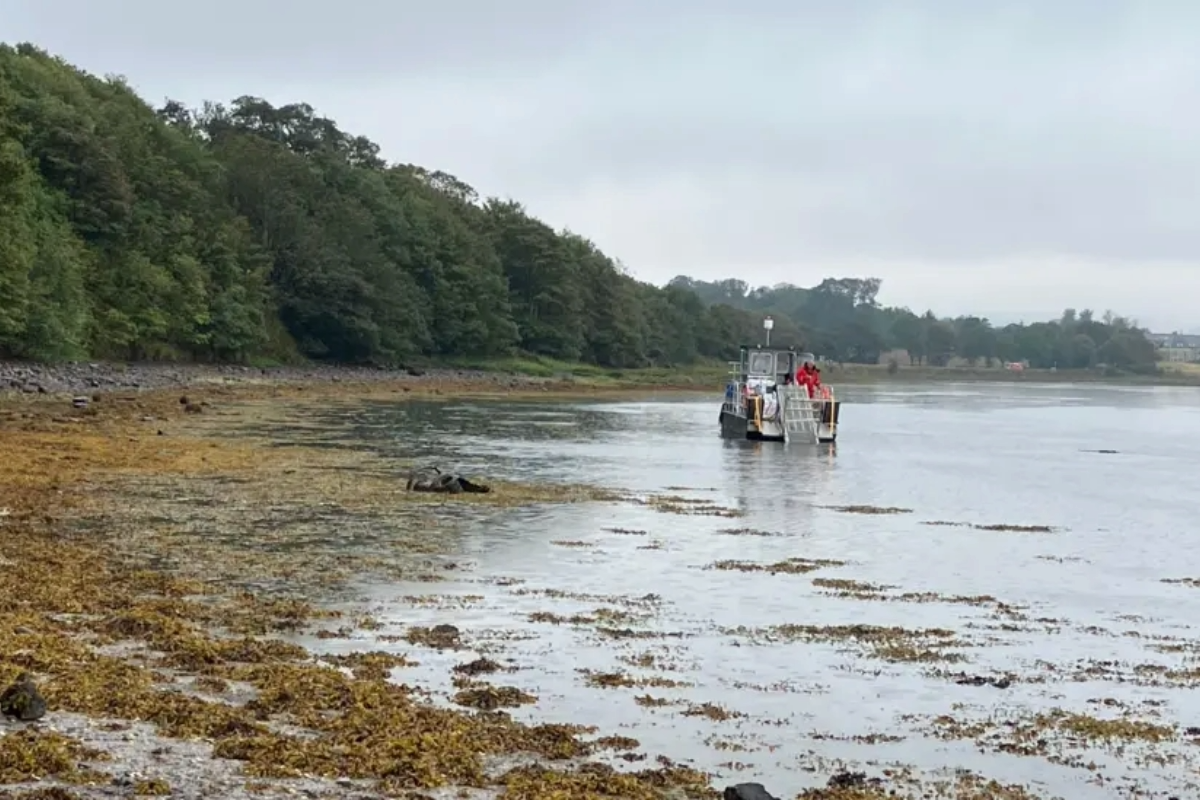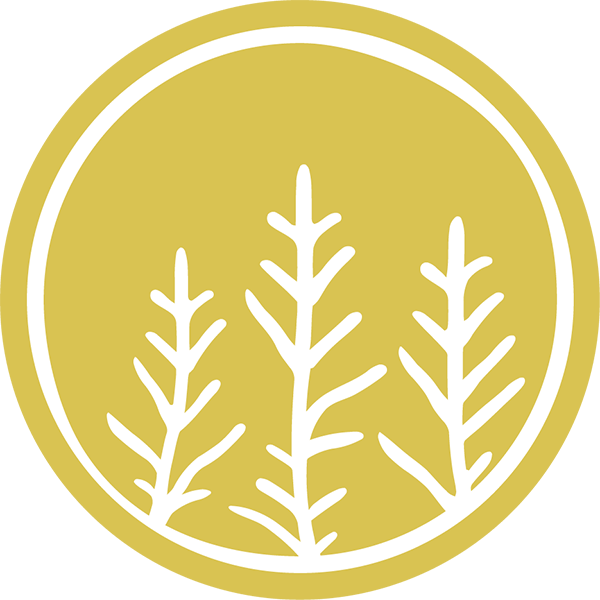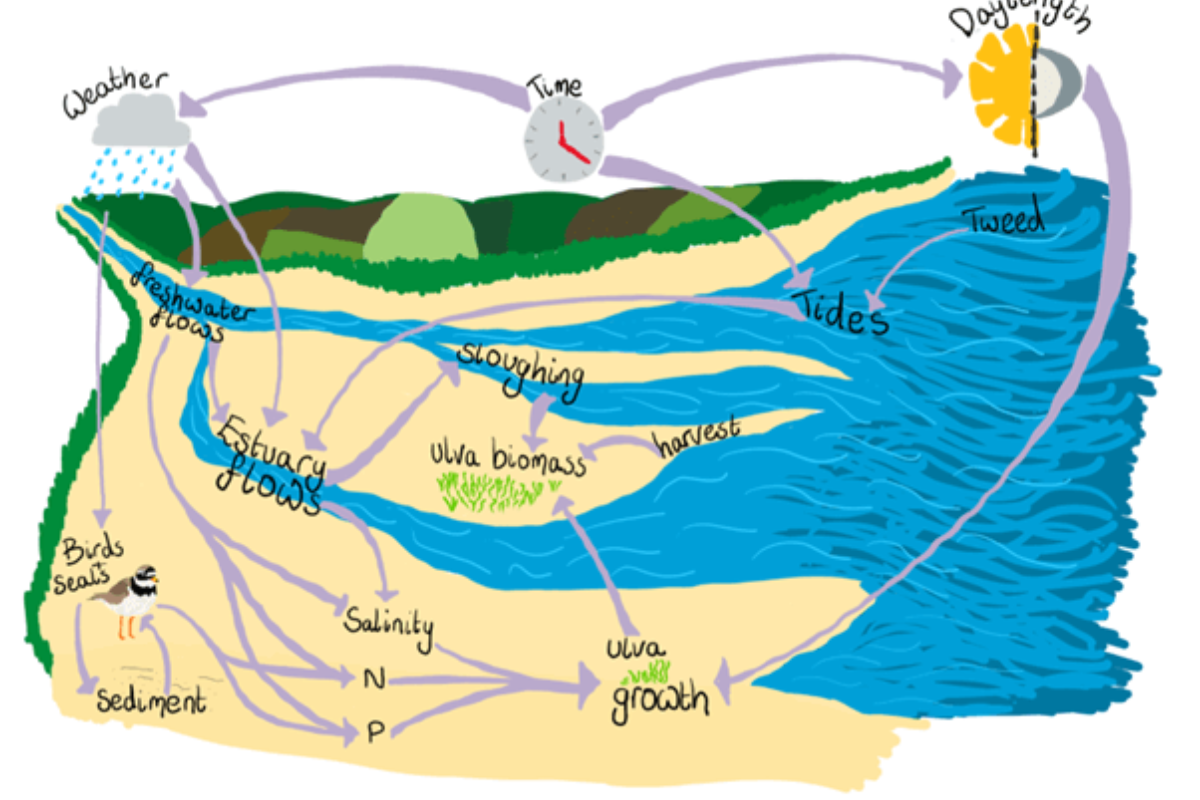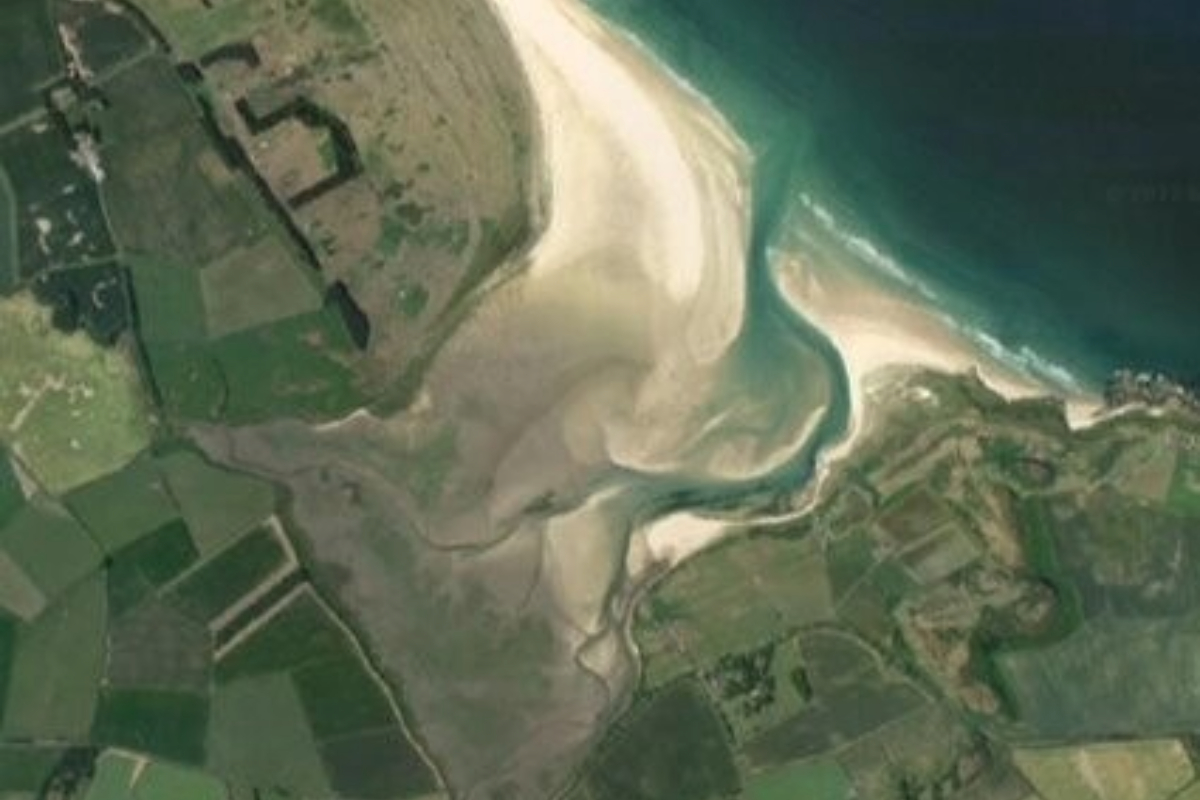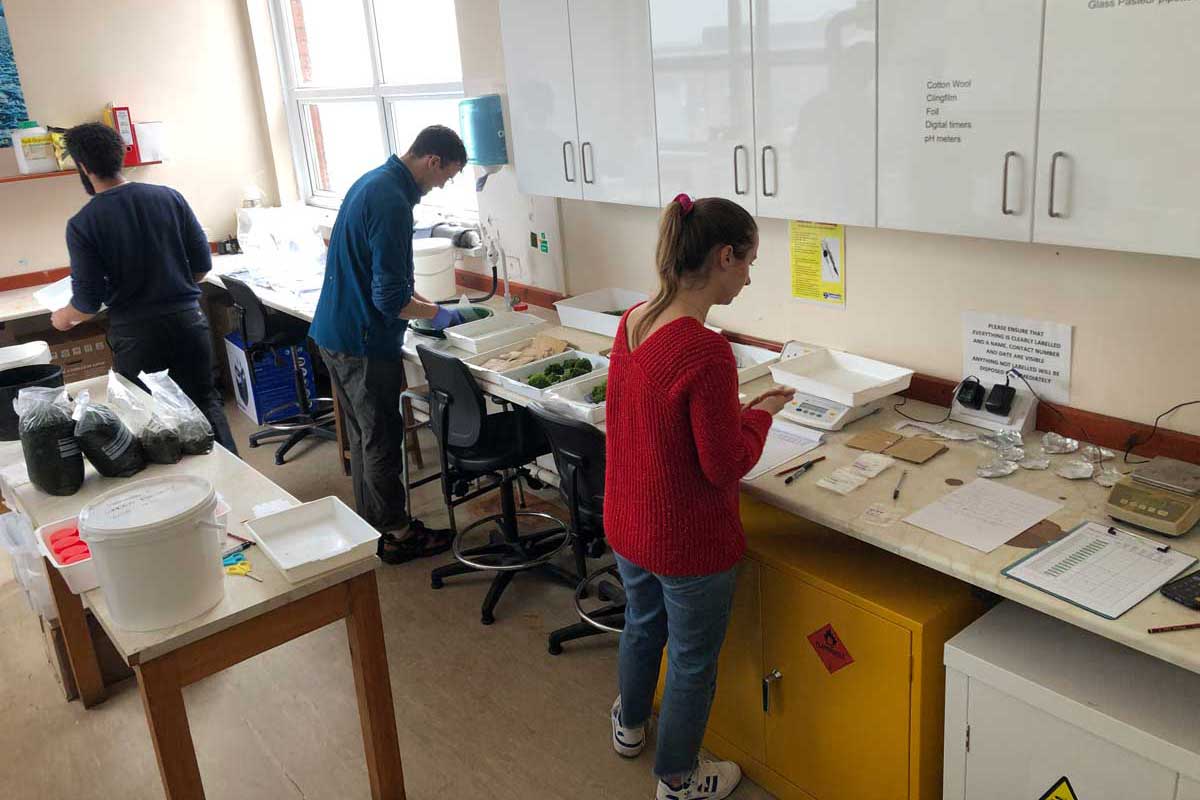Macroalgae rarely disperses from the system, and each year’s eutrophication cycle increases mat volume, so direct removal is the only viable option. However, it’s vital not to damage the precious intertidal seagrass growing on the mudflat beneath.
WADER has been trialling a variety of sensitive methods to remove the algal mats, with a view to potentially extracting several tonnes of algal biomass from Budle Bay.
In summer 2025 a team of scientists from Natural England, Newcastle University and the Environment Agency piloted different methods of algae removal on different habitats. A specially adapted boat fitted with a conveyor-belt, normally used to remove weeds from inland lakes, proved the most successful. It collected and removed two and a half tonnes of algae in just four days, showing the potential for a scaled-up approach.
The Circular Economy
In parallel, we’ve been exploring innovative ways to recycle the harvested raw algal material commercially – for example as a ‘bio-stimulant product’ for crops, as a source of biomass energy, for bait and as a potential dye pigment in the textiles industry. This is vitally important, as it will help WADER’s conservation work to be scale-able and financially sustainable in the long-term.
Research is being undertaken by three Newcastle University postgraduate students: Charlotte Jennings is exploring seagrass recovery and restoration in Budle Bay, Phoebe Lewis has investigated the extraction of algal colour pigments for use in fashion and textiles and Ethan Clarke is researching the potential value of macroalgae as a raw material in Biorefinery.
Read the BBC story on our successful removal here
